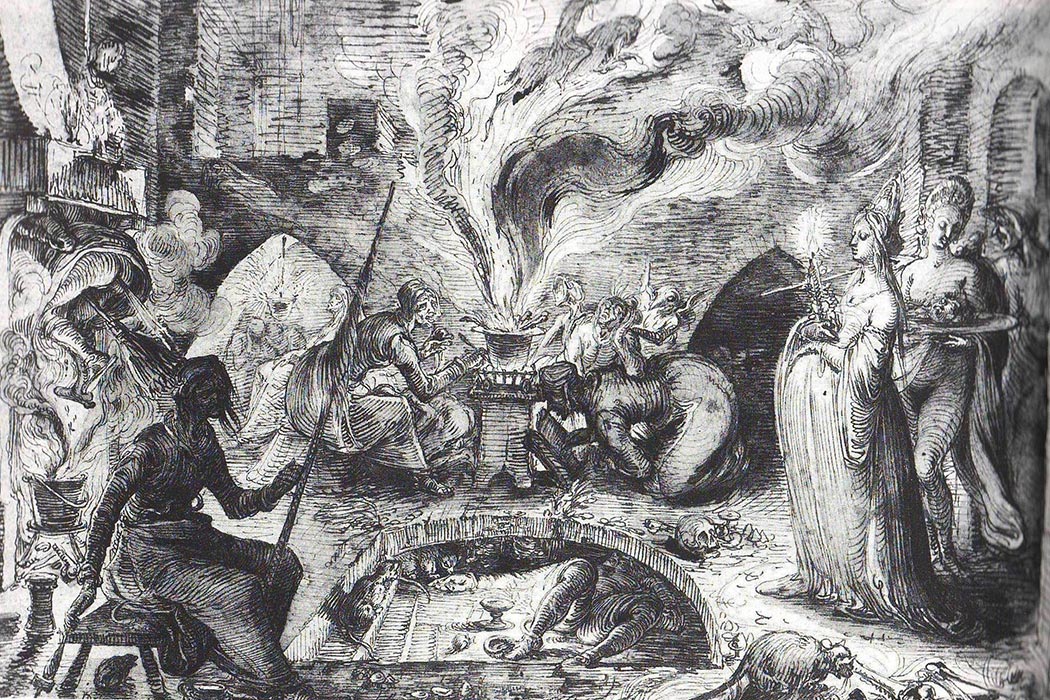In February 1692, the Massachusetts Bay Colony town of Salem Village found itself at the center of a notorious case of mass hysteria: eight young women accused their neighbors of witchcraft. Trials ensued and, when the episode concluded in May 1693, fourteen women, five men, and two dogs had been executed for their supposed supernatural crimes.
The Salem witch trials occupy a unique place in our collective history. The mystery around the hysteria and miscarriage of justice continue to inspire new critiques, most recently with the recent release of The Witches: Salem, 1692 by Pulitzer Prize-winning Stacy Schiff.
But what caused the mass hysteria, false accusations, and lapses in due process? Scholars have attempted to answer these questions with a variety of economic and physiological theories.
The economic theories of the Salem events tend to be two-fold: the first attributes the witchcraft trials to an economic downturn caused by a “little ice age” that lasted from 1550-1800; the second cites socioeconomic issues in Salem itself.
Emily Oster posits that the “little ice age” caused economic deterioration and food shortages that led to anti-witch fervor in communities in both the United States and Europe in the sixteenth and seventeenth centuries. Temperatures began to drop at the beginning of the fourteenth century, with the coldest periods occurring from 1680 to 1730. The economic hardships and slowdown of population growth could have caused widespread scapegoating which, during this period, manifested itself as persecution of so-called witches, due to the widely accepted belief that “witches existed, were capable of causing physical harm to others and could control natural forces.”
Salem Village, where the witchcraft accusations began, was an agrarian, poorer counterpart to the neighboring Salem Town, which was populated by wealthy merchants. According to the oft-cited book Salem Possessed by Paul Boyer and Stephen Nissenbaum, Salem Village was being torn apart by two opposing groups–largely agrarian townsfolk to the west and more business-minded villagers to the east, closer to the Town. “What was going on was not simply a personal quarrel, an economic dispute, or even a struggle for power, but a mortal conflict involving the very nature of the community itself. The fundamental issue was not who was to control the Village, but what its essential character was to be.” In a retrospective look at their book for a 2008 William and Mary Quarterly Forum, Boyer and Nissenbaum explain that as tensions between the two groups unfolded, “they followed deeply etched factional fault lines that, in turn, were influenced by anxieties and by differing levels of engagement with and access to the political and commercial opportunities unfolding in Salem Town.” As a result of increasing hostility, western villagers accused eastern neighbors of witchcraft.
But some critics including Benjamin C. Ray have called Boyer and Nissenbaum’s socio-economic theory into question. For one thing –the map they were using has been called into question. He writes: “A review of the court records shows that the Boyer and Nissenbaum map is, in fact, highly interpretive and considerably incomplete.” Ray goes on:
Contrary to Boyer and Nissenbaum’s conclusions in Salem Possessed, geo graphic analysis of the accusations in the village shows there was no significant villagewide east-west division between accusers and accused in 1692. Nor was there an east-west divide between households of different economic status.
On the other hand, the physiological theories for the mass hysteria and witchcraft accusations include both fungus poisoning and undiagnosed encephalitis.
Linnda Caporael argues that the girls suffered from convulsive ergotism, a condition caused by ergot, a type of fungus, found in rye and other grains. It produces hallucinatory, LSD-like effects in the afflicted and can cause victims to suffer from vertigo, crawling sensations on the skin, extremity tingling, headaches, hallucinations, and seizure-like muscle contractions. Rye was the most prevalent grain grown in the Massachusetts area at the time, and the damp climate and long storage period could have led to an ergot infestation of the grains.
One of the more controversial theories states that the girls suffered from an outbreak of encephalitis lethargica, an inflammation of the brain spread by insects and birds. Symptoms include fever, headaches, lethargy, double vision, abnormal eye movements, neck rigidity, behavioral changes, and tremors. In her 1999 book, A Fever in Salem, Laurie Winn Carlson argues that in the winter of 1691 and spring of 1692, some of the accusers exhibited these symptoms, and that a doctor had been called in to treat the girls. He couldn’t find an underlying physical cause, and therefore concluded that they suffered from possession by witchcraft, a common diagnoses of unseen conditions at the time.
The controversies surrounding the accusations, trials, and executions in Salem, 1692, continue to fascinate historians and we continue to ask why, in a society that should have known better, did this happen? Economic and physiological causes aside, the Salem witchcraft trials continue to act as a parable of caution against extremism in judicial processes.
Editor’s note: This post was edited to clarify that Salem Village was where the accusations began, not where the trials took place. In addition, we added additional bibliographic information to the resource list below.







